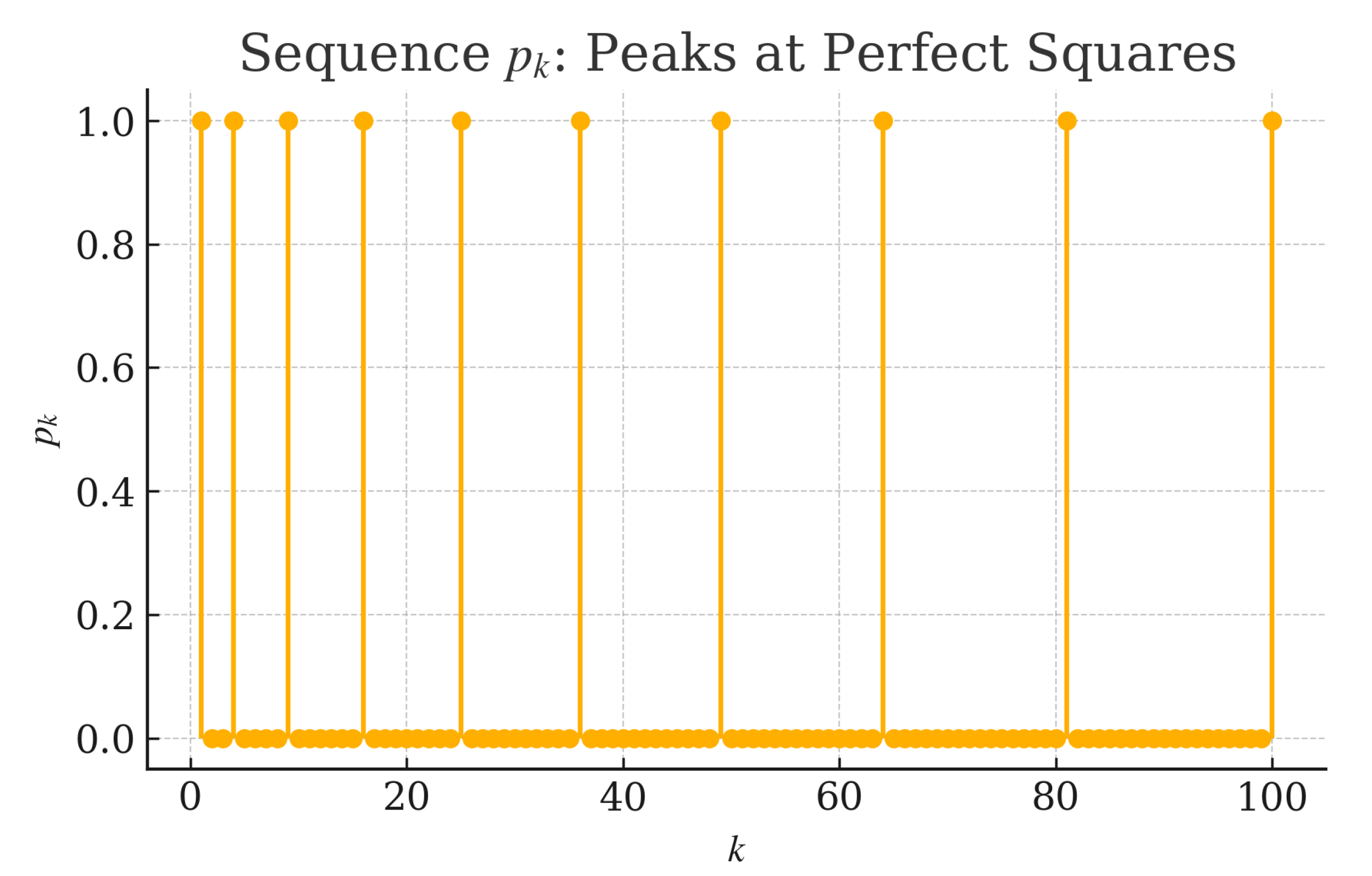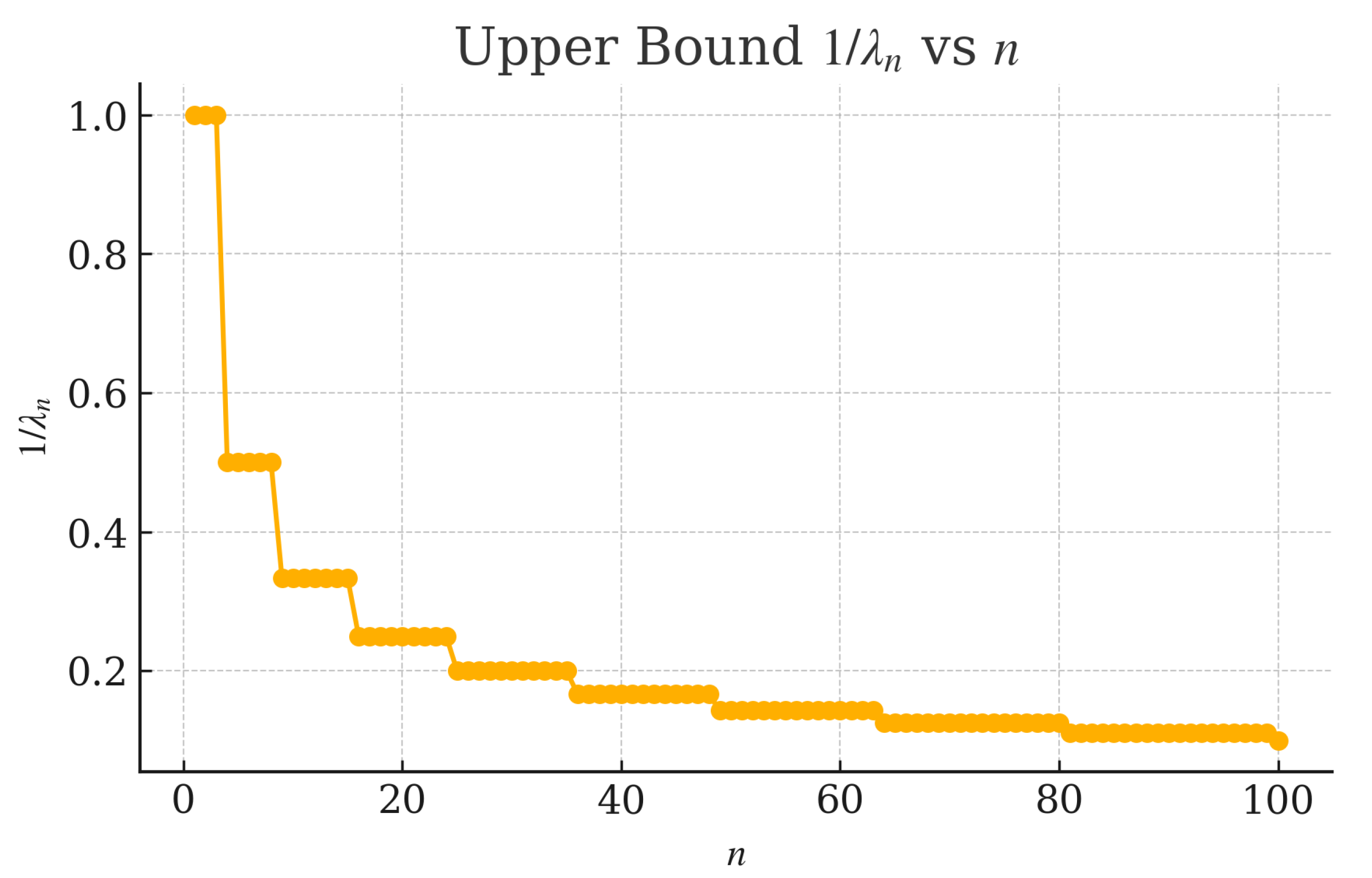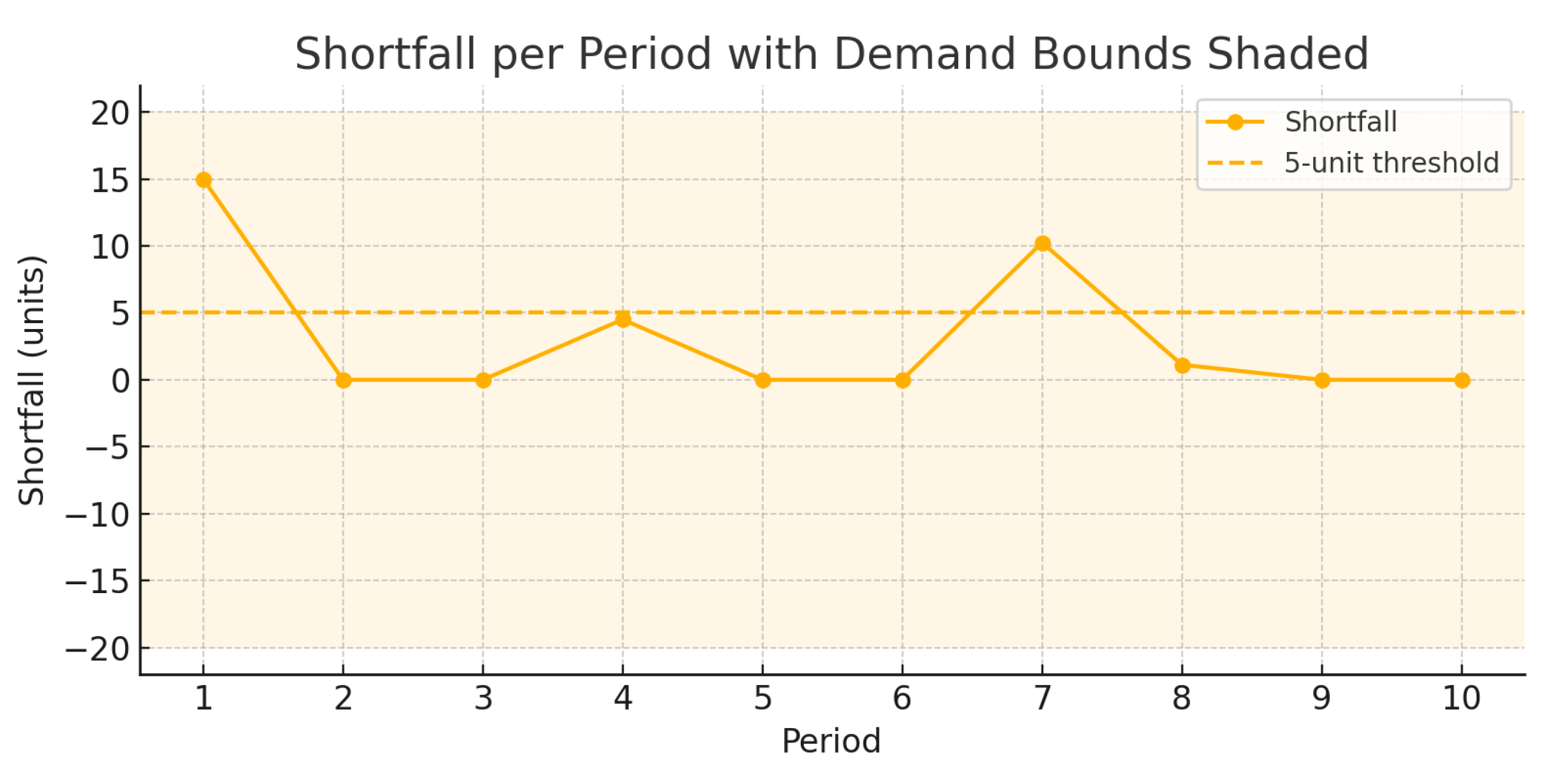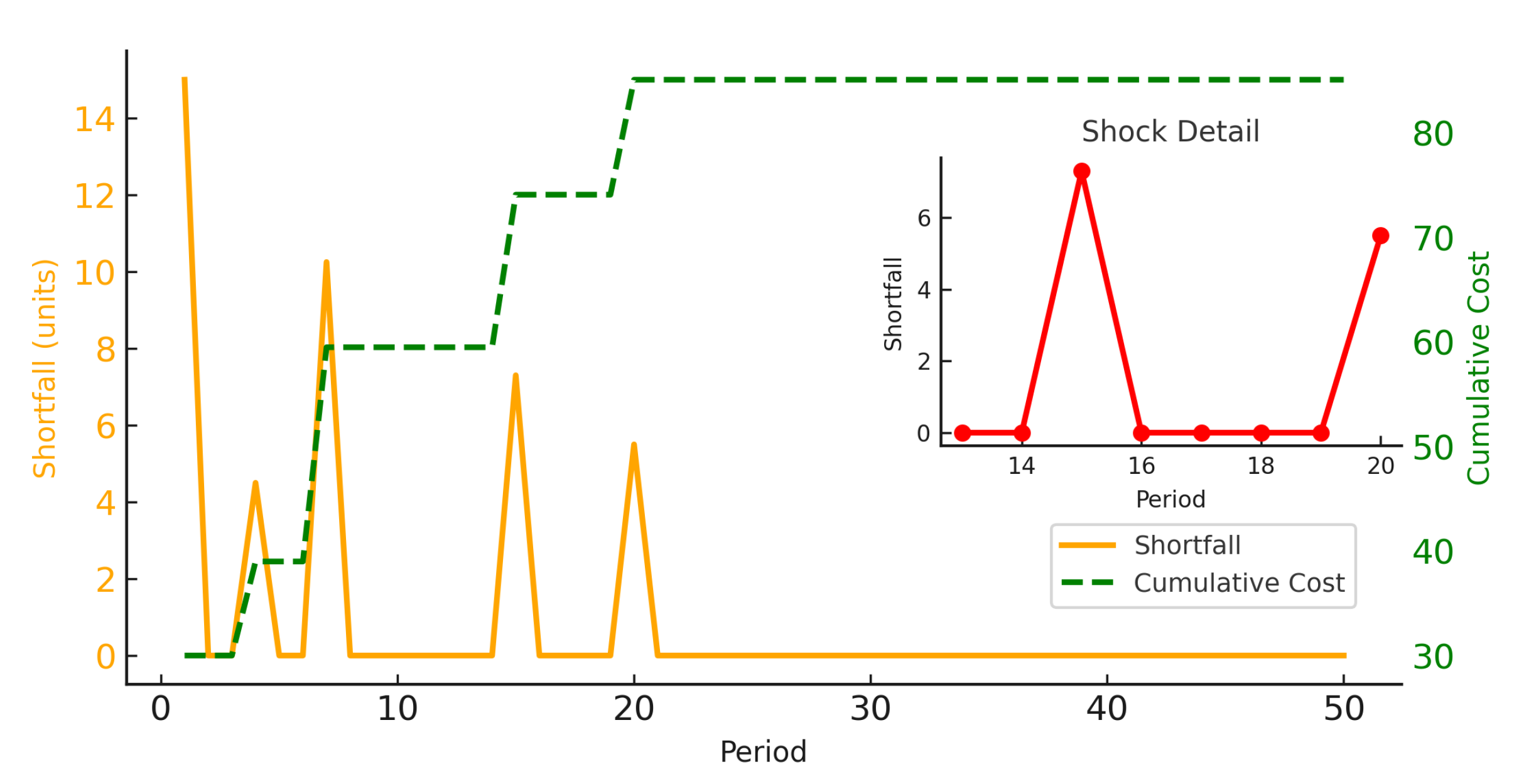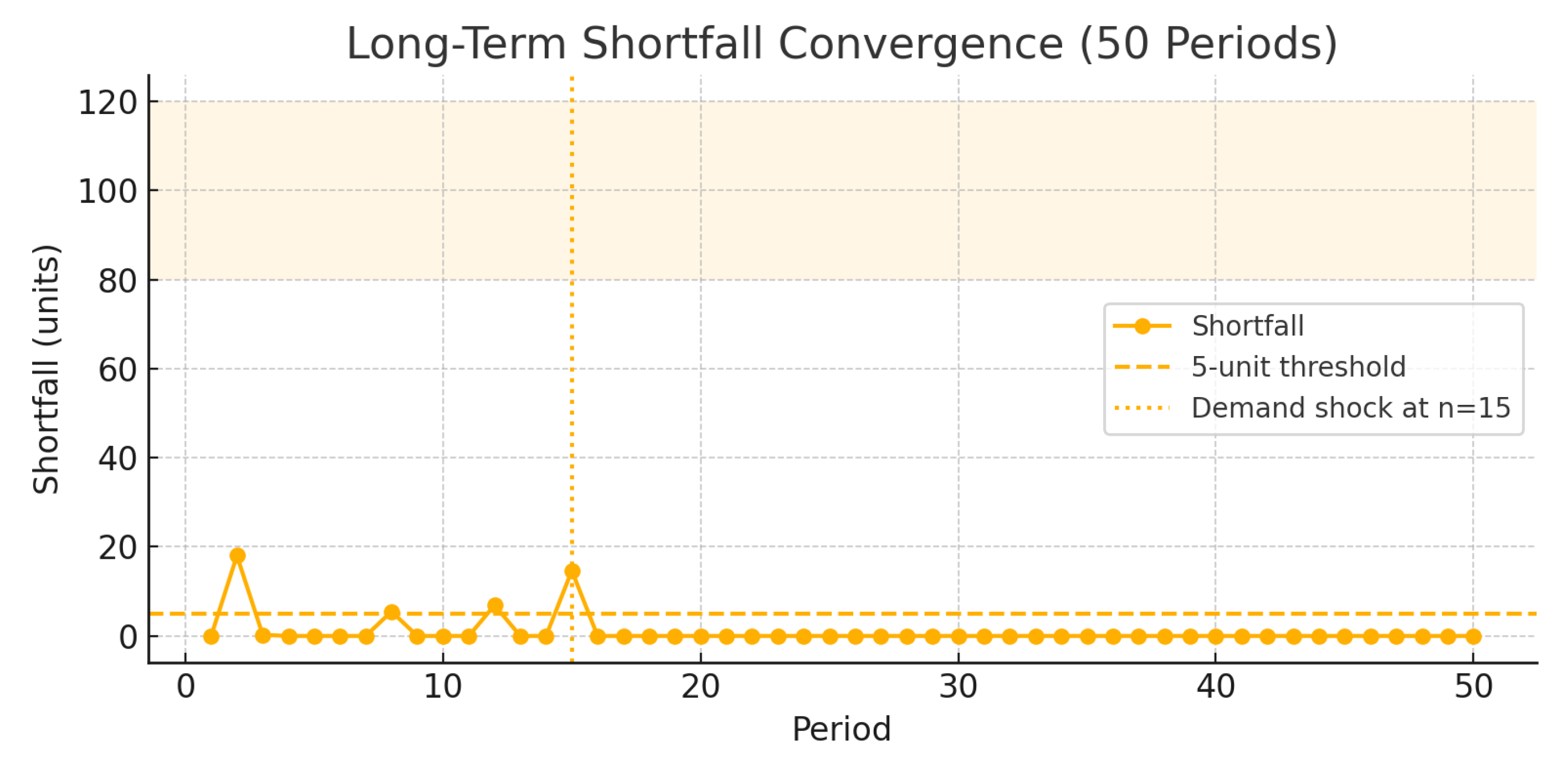1. Introduction and Background
The idea of convergence plays a crucial role in mathematical analysis and its applications. Conventional convergence, which studies how sequences approach a certain limit, is a well-established concept. Nevertheless, classical convergence can be limiting in some situations. To overcome these constraints, various alternative types of convergence have been proposed, with statistical convergence being particularly notable for its flexibility and wider applicability.
Statistical convergence was first introduced by Steinhaus and Fast in 1951 [
1,
2]. It broadens the concept of classical convergence by focusing on the density of terms in a sequence rather than their exact positions. A sequence is considered statistically convergent if the indices at which the sequence deviates significantly from the limit form a set with zero density. This method not only extends the scope of convergence but also finds applications in fields such as number theory, functional analysis, and approximation theory.
Over the years, the concept of statistical convergence has been extended to various frameworks, including normed spaces, metric spaces, fuzzy normed spaces, paranormed spaces, and fuzzy paranormed spaces [
3,
4,
5,
6,
7,
8,
9,
10,
11,
12,
13,
14,
15,
16,
17,
18,
19,
20,
21,
22,
23,
24,
25].
Recent advances have significantly expanded these concepts, including higher-order statistical convergence in fuzzy difference sequence spaces with applications to fuzzy number theory [
26], weighted statistical convergence of fractional order for double sequences in paranormed spaces [
27],
-statistical convergence in fuzzy
n-normed linear spaces [
28], generalizations to triple sequences via
-statistical convergence [
29], and Tauberian theory for statistically Cesàro summable triple sequences of fuzzy numbers [
30].
These contributions underscore the ongoing evolution of statistical convergence, particularly in multidimensional settings (double and triple sequences), advanced fuzzy structures, and Tauberian theory, reinforcing its interdisciplinary relevance.
Building upon statistical convergence, the concept of
-statistical convergence was introduced by Mursaleen [
31] as a more generalized framework. Here,
represents a sequence that determines the weighted density of terms in a sequence. This extension provides greater flexibility in analyzing convergence behavior, allowing the study of sequences under nonuniform density conditions. The
-statistical convergence framework has been further explored in various mathematical settings, such as paranormed spaces and fuzzy spaces, offering new insights and tools for sequence analysis [
32,
33,
34,
35,
36,
37,
38,
39,
40,
41].
Despite these advancements, existing frameworks for
-statistical convergence exhibit critical limitations in handling complex uncertainties. For instance, studies in fuzzy normed spaces (e.g., [
25]) lack the flexibility to model non-homogeneous uncertainty distributions, while works in paranormed spaces (e.g., [
8]) cannot capture gradual membership transitions inherent in imprecise data. Furthermore, recent extensions to
n-normed spaces [
28] or triple sequences [
29] focus primarily on theoretical generalizations without providing adaptive convergence criteria for real-world volatility.
In contrast, our work bridges these gaps by unifying -statistical convergence with fuzzy paranormed spaces. This synthesis enables:
- (i)
Dynamic density-based weighting (via -sequences) for irregular demand patterns;
- (ii)
Fuzzy paranormed structures to quantify partial or transitional uncertainties; and
- (iii)
Robust convergence criteria for sequences with abrupt, nonuniform fluctuations—addressing rigidity in earlier models [
5,
15].
This framework thus overcomes the key constraint of prior approaches: their inability to jointly model stochastic volatility and fuzzy imprecision in a unified topology.
In practical supply chain inventory management, sudden demand shocks and imprecise demand forecasting often lead to significant stockouts or overstocking. Therefore, applying the framework of -statistical convergence in fuzzy paranormed spaces provides a robust tool for modeling such uncertainties and designing adaptive replenishment policies that maintain desired service levels under fluctuating demand.
The illustrative inventory case study serves to demonstrate the practical application of the theoretical framework; full-scale industrial implementations and empirical validations are postponed to future work.
This paper aims to extend the concept of -statistical convergence to fuzzy paranormed spaces, providing a comprehensive framework for analyzing convergence in these settings. The main results include new definitions, theorems, and illustrative examples that demonstrate the applicability and significance of this generalization.
The subsequent sections are organized as follows:
Section 2 provides the necessary preliminaries, including key definitions and foundational concepts.
Section 3 presents the fundamental definitions and propositions underpinning the theoretical framework of our study. In
Section 4, we establish the core theorems that offer critical insights into
-statistical convergence within this context. Finally,
Section 5 summarizes the implications of these theorems and outlines directions for future research.
2. Preliminaries
This section introduces the foundational concepts of paranormed spaces, fuzzy normed spaces, fuzzy paranormed spaces, statistical convergence, and -statistical convergence. We begin by defining paranormed and fuzzy normed spaces, followed by the notion of statistical convergence within these spaces. Finally, we extend these concepts to -statistical convergence in both classical and generalized settings, including fuzzy paranormed spaces.
2.1. Paranormed Spaces
Let be a function, and let X be a real or complex linear space. If all satisfy the following requirements, then ℘ is a paranorm and the pair is called a paranormed space.
If implies , then ℘ is said to be a total paranorm, where is the zero vector of X.
In paranormed spaces, the concept of convergence is defined similarly to normed spaces.
A sequence is considered convergent (or ℘-convergent) to the element in if, for each , there exists a positive integer such that whenever . In this case, we write ℘-lim , and is referred to as the ℘-limit of p.
2.2. Fuzzy Normed Spaces
The fuzzy norm introduced by Felbin [
42], further developed by Xiao and Zhu [
43] and finalized by Şençimen and Pehlivan [
17], is given as follows.
Here,
denotes the zero fuzzy number, i.e., a fuzzy number whose membership function is fully concentrated at 0, typically represented as the degenerate fuzzy set
Let X be a vector space over . Let be a mapping, and let L and R be mappings (respectively, the left norm and right norm) from to , which are symmetric, nondecreasing in both arguments and satisfy and .
The quadruple is called a fuzzy normed linear space (briefly ), and is called a fuzzy norm if the following axioms are satisfied.
Write for and . Suppose that for all , , we have , where is the zero vector of X.
Şençimen and Pehlivan [
17] modified conditions 3-a and 3-b in the fuzzy norm definition as follows:
For all :
- 3-a.
;
- 3-b.
.
Thus, in an FNS , the triangle inequality of the fuzzy norm definition (3) implies . According to this definition, if and only if for all . Furthermore, whenever .
Now, if
, then
for all
and
. For
, we have
for each
, i.e.,
for each
, where
and
.
Along with this definition, Şençimen and Pehlivan [
17] defined convergence in fuzzy normed spaces by using the distance framework developed by Kaleva [
44] and Felbin [
42]. Throughout this paper, we denote that distance by
. Specifically, if
A and
B are fuzzy numbers with
–cuts
and
, we set
so that
measures the deviation of the fuzzy norm
from the zero fuzzy number
.
A sequence
(in the fuzzy normed space
) is convergent to
provided that
i.e., for all
, there exists
such that
for all
. We denote this by
.
This means that for every
, there exists
such that
for all
. In terms of neighborhoods, we have
provided that for each
, there exists
such that
whenever
.
2.3. Fuzzy Paranormed Spaces
Çınar et al. [
23] introduced the notion of a fuzzy paranorm—a paranorm-type extension of the classical fuzzy norms of Felbin [
42] and Xiao–Zhu [
43] that replaces the homogeneity axiom with a paranorm-continuity requirement—and their definition is recalled below as follows.
Let
be a paranorm and let
be a vector space. Let the mappings
L and
be symmetric, non-decreasing, and satisfy
and
. Write
for
and
. Suppose that for all
,
(where
is the zero vector of
X),
The quadruple is called a fuzzy paranormed space and ℘ is a fuzzy paranorm if the following conditions hold:
If implies , then the fuzzy paranorm is referred to as a totally fuzzy paranorm.
2.4. Statistical Convergence
A set
K of positive integers has a natural density defined by
where
represents the count of elements of
K not exceeding
n. It is evident that
for any finite set
K.
Statistical convergence using natural density was defined by Fast [
2] as follows.
If the set
has natural density zero for every
, then the real number sequence
is said to be statistically convergent to
. In this case, we write
The definition of statistical convergence in paranormed spaces is given by Alotaibi and Alroqi [
13] as follows.
If, for each
, we have
then the sequence
is statistically convergent to
in
(or
-convergent). We write
The set of all -convergent sequences is denoted by .
Next, we give the definitions of statistical convergence in fuzzy normed spaces [
17] and fuzzy paranormed spaces [
23], which form the basis of our study.
Assume that
is a fuzzy normed space. If
then a sequence
in
X is statistically convergent to
, and we write
i.e., for each
,
This means that for any
, the natural density of the set
is zero. In other words, for each
, the condition
holds for almost all
k. In terms of neighborhoods,
means that for each
,
i.e.,
for almost all
k.
A useful equivalent form is:
When
, it implies that for every
,
as for all
and
, we have
Let
be a fuzzy paranormed space. A sequence
is statistically convergent to
if, for each
,
This implies that for each
, the set
has natural density zero. In other words, for each
, we have
for almost all
k, where
According to the above definition,
Note that
implies
for each
as
holds for every
and each
. We denote the set of all statistically convergent sequences by
.
2.5. -Statistical Convergence
The concept of -statistical convergence generalizes statistical convergence by introducing a weight sequence .
Let be a sequence of positive real numbers that is non-decreasing and tends to infinity, with the condition that and . The collection of all such sequences is denoted by .
The idea of
-statistical convergence was proposed by Mursaleen [
31] as follows.
A sequence
is said to be
-statistically convergent or
-convergent to
if for every
,
where
. In this case, we write
or
and define
Alghamdi and Mursaleen [
36] defined
-statistical convergence in paranormed spaces as follows.
A sequence
is said to be
-statistically convergent to the number
in the paranormed space
if, for each
,
In this case, we write .
Türkmen and Çınar [
34] defined the concept of
-statistical convergence within fuzzy normed spaces as follows.
Let
be a fuzzy normed space (FNS) and
. A sequence
in
X is considered
-statistically convergent to
with respect to the fuzzy norm on
X, or
-convergent, if for every
,
and we write
or
or
where
.
This indicates that for every
, the set
has natural density zero, which means that for each
,
holds for almost all
k.
In this case, we express as . The collection of all sequences that converge statistically with respect to the fuzzy norm on X is denoted by .
The element serves as the -limit of the sequence . In terms of neighborhoods, we say converges to if for every , lies in for almost all k.
An equivalent way to express this is:
Note that
implies
for each
, as
holds for every
and each
.
3. Main Definitions and Propositions
In this section, we present the concept of
-statistical convergence for sequences in fuzzy paranormed spaces. Furthermore, we explore its relationship with
-statistically Cauchy sequences and
-summability within this framework.
Definition 1. Let be a fuzzy paranormed space and . A sequence in X is said to be λ-statistically convergent to with respect to the fuzzy paranorm on X, or -convergent, if for each ,and we writewhere . For every
, the natural density of the set
is zero, meaning that for each
,
holds for almost all
k.
In this case, we denote it as . The set of all statistically convergent sequences with respect to the fuzzy paranorm on X is denoted by .
The element
is the
-limit of
. In terms of neighborhoods, we have
provided that for each
,
for almost all
k.
A useful way to interpret the above definition is:
Note that
implies
for each
, as
holds for every
and each
.
Throughout this paper, we say that is statistically convergent to with respect to the fuzzy paranorm on X if it is -convergent to .
Because the natural density of a finite set is zero, every convergent sequence in
is also
-statistically convergent. However, the converse is not always true. Çınar et al. [
23] demonstrated this for the case of statistical convergence in Example 3.4. If we take
, we show that not every
-statistically convergent sequence is convergent.
Proposition 1. Let and be sequences in a fuzzy paranormed space such thatwhere . Then, the following holds: - (i)
;
- (ii)
for all ;
- (iii)
.
Definition 2. Let be a fuzzy paranormed space (FPS). A sequence in X is called λ-statistically Cauchy with respect to the fuzzy paranorm on X if for every there exists a number such that In the fuzzy paranorm on X, the fact that is -Cauchy implies that it is λ-statistically Cauchy.
Proposition 2. All -convergent sequences in are also -Cauchy sequences.
Proof. Let and . Then, we have for almost all k. Choose such that .
Because
is a paranorm in the conventional sense, we have
for almost all
k. This shows that
is
-Cauchy. □
Definition 3. Let be an FPS and let be a non-decreasing sequence of positive numbers tending to ∞, satisfying and . Let be a sequence in the set X.
This sequence p is said to be strongly λ-summable with respect to the fuzzy paranorm on X if there exists such thatwhere . In this context, we express . The collection of all fuzzy paranorms on X that are strongly summable is referred to as .
We say that
X is strongly
-summable to
with respect to the fuzzy paranorm on
X. If
, then strong
-summability reduces to strong Cesàro summability with respect to the fuzzy paranorm on
X, which is defined as follows:
The collection of all strongly summable fuzzy paranorm sequences on X is denoted by .
Therefore, we express them as follows:
5. Conclusions
In this section, we summarize the main results from the theorems presented in the previous section. Additionally, we state important corollaries derived from these results.
Corollary 1. Let and be two sequences in Λ such that for all sufficiently large n. Ifthen Corollary 2. Let satisfy for all sufficiently large n and Then, .
This result follows immediately from Corollary 1 by taking .
Theorem 5. Let and be elements of Λ such that for all sufficiently large n.
- 1.
If condition (1) holds, then - 2.
If condition (2) holds, then
Proof. (i) Because
for all sufficiently large
n, it follows that
is a subset of
. Therefore, for all such
n,
Taking the limit as
and applying condition (
1), we conclude that
(ii) Let
so there exists
such that
Because
, we have
, and
for all large
n. Hence,
By condition (
2), the first term tends to zero as
, and because
, the second term also tends to zero. (Note that
for all sufficiently large
n.)
□
Corollary 3. Let be such that for all sufficiently large . If condition (2) holds, then Theorem 6. Let such that for all .
- 1.
If condition (1) holds, thenand the inclusion is strict for some ; - 2.
If and in , thenwhenever condition (2) holds.
Proof. (i) Let
and suppose
converges to
in
. For every
, we have
Taking limits as
and applying (
1), it follows that
in
.
To show strictness of the inclusion, take
,
and define
Then, clearly
in
, but
Using the formula for sum of squares,
we get
Because
and
, it follows that
hence
so
.
(ii) Suppose
in
and
, so there exists
such that
for all
k. Because
and
, for each
and every
,
Taking the limit as
and applying (
2), the right side tends to zero as
in
.
By setting
for all
, we obtain subsequent results. Note that
that is, (
2) implies (
1). □
Corollary 4. Let . Then:
- 1.
If and in , then in ;
- 2.
If in , then in .
Example 1. In Çınar et al.’s [23] definition, let with zero vector and define For each , set its α-cut by Moreover, define the 0-cut as the limit Then, is a fuzzy paranormed space.
The 0-level function of the sequence is given by Hence, is λ-statistically convergent to 0 in , but it does not converge to 0 in the classical sense.
As illustrated in
Figure 1, the sequence
takes the value 1 exactly at perfect square indices and 0 elsewhere. This highlights the “sparse shock” character of the example: infinitely many isolated peaks separated by arbitrarily large gaps.
Figure 2 depicts the theoretical upper bound
as a function of
n. This monotone decrease to zero confirms the theoretical upper bound property, ensuring that
for every fixed
.
Example 2 (Fuzzy inventory planning)
. Consider a retailer forecasting period-by-period demand modeled as a triangular fuzzy number:The adaptive inventory policy is defined as follows:
- 1.
Initial stock: ;
- 2.
For each period k, observe actual demand and compute the shortfall: - 3.
Update inventory with learning rate :
A 10-period simulation reveals only two shortfalls exceeding 5 units. Defining , we observewhich implies that the shortfall sequence λ-statistically converges to zero. Figure 3 shows period-by-period shortfalls (orange circles) alongside the 5-unit threshold (dashed line). The shaded region indicates the fuzzy demand bounds (80–120 units). Notice that only periods 1, 4, and 7 exceed the threshold, with rapid correction thereafter. Figure 4 presents the shortfall trajectory (orange line, left axis) and cumulative holding cost (green dashed line, right axis; unit cost = 2). The inset zooms in on periods 13–20, highlighting the impact of a demand shock around . Verification of Convergence Conditions:
Extending the simulation to 50 periods, the λ-statistical convergence condition, expressed probabilistically, is: Figure 5 illustrates the long-term shortfall behavior over 50 periods. The red dashed line marks the 5-unit threshold; the shaded band shows fuzzy demand bounds. The dotted vertical line at indicates a significant demand shock. After period 20, all shortfalls remain below the threshold, confirming λ-statistical convergence in practice. In addition, the adaptive system satisfies standard convergence properties:
- 1.
Contraction property: for some ;
- 2.
Martingale stability: for each ;
- 3.
Parameter robustness: Convergence holds for learning rates .
In practice, serial correlation is removed by pre-processing, and λ-statistical convergence is analyzed on the residuals.
Remark 1. The λ-statistical convergence of the shortfall sequence depends solely on the finiteness of ; hence, it remains valid if the triangular demand numbers are replaced by any bounded fuzzy profile, such as trapezoidal or Gaussian-shaped membership functions.
5.1. Key Contributions and Practical Implications
Beyond theoretical advances, our work demonstrates practical value for adaptive inventory optimization under uncertain, shock-driven demand. By applying -statistical convergence within a fuzzy paranorm framework, inventory policies can dynamically adjust safety stocks based on observed demand fluctuations, thereby improving service levels while controlling holding costs. This bridges rigorous convergence theory with real-world replenishment strategies and lays the groundwork for further empirical validation.
5.2. Future Work
Classical EOQ (economic order quantity) and bullwhip mitigation rules typically rely on deterministic or linear forecasting assumptions. In contrast, the -statistical approach specifically addresses fuzzy, shock-driven demand. Consequently, a quantitative comparison of costs and service levels necessitates a dedicated simulation study with fully specified cost parameters and lead time structures, which we plan to undertake in future research.
Building on the current -statistical framework, we will explore two broader convergence concepts in fuzzy paranormed spaces:
- (i)
Lacunary statistical convergence, allowing the gaps between index blocks to grow super-linearly, thus isolating highly clustered, sporadic demand shocks that may be obscured by uniform windowing;
- (ii)
Ideal convergence, permitting the exclusion of a pre-specified negligible subset of indices (e.g., holiday blackouts or data outages), thereby enhancing robustness against irregular disruptions.
These extensions promise a more flexible toolkit for modeling real-world demand volatility and will be pursued in future empirical work.
